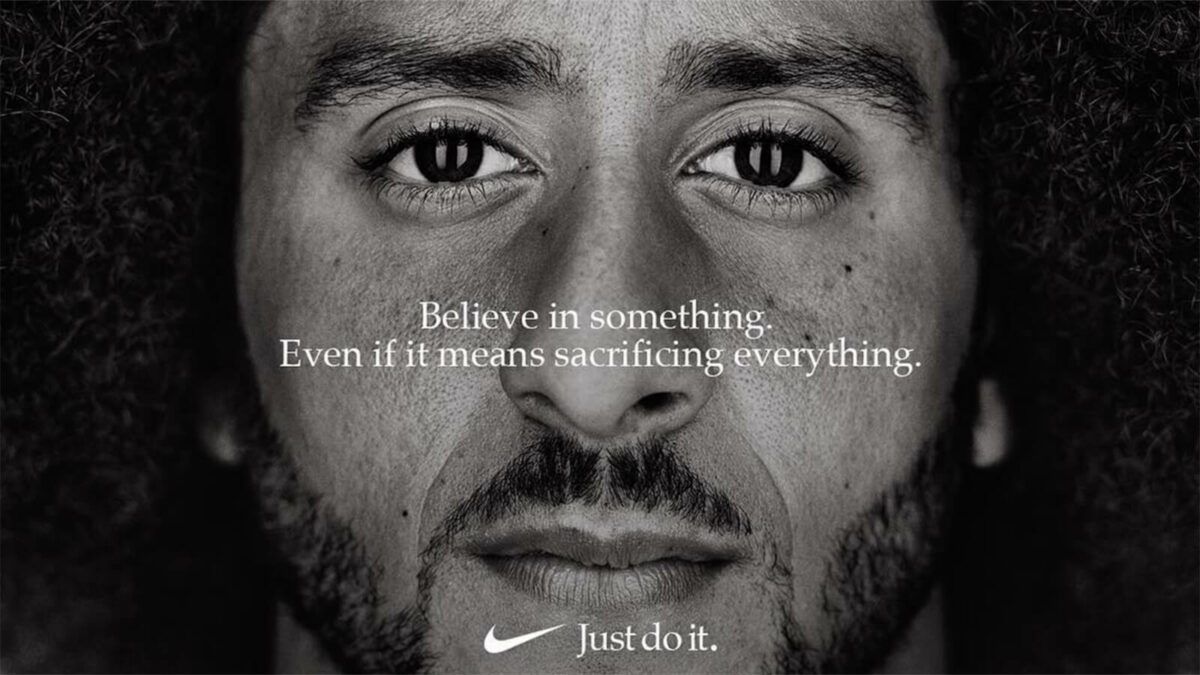True story: My father works in real estate. He’s spent the last fifty years constructing houses, condos, and office buildings. Now in his eighties, with several projects underway, he apparently plans to die in his boots. I tell people he has a building complex.
Ba-dum-bump.
That used to just be a joke about my dad. But then I came to Silicon Valley, and I saw building complexes everywhere. The bad kind!
Everybody is building. They have been told they should by prominent investors. They talk about their new business idea, their product, their team, their startup, their pricing model, and their go-to-market strategy. But a very large number of them have no idea whether they are building something people want. Which means they are building too soon.
Sometimes, when an early-stage founder asks me for advice, I try to have that conversation with them. I tell them they should go out and meet people who might have the problem that they think their product solves. They should hold the problem for a while.
And then an interesting thing happens. They find a lot of reasons not to talk to the people who might have the problem. They keep building something based on their new business idea, but they don’t know for whom.
When launching a business, are people necessary?
One early-stage founder told me, “I just need to apply for my business license so that I can put ads on Google so that I can find out if people will click.”
But that is not what he needs to do. He needs to get to know the people who might have the problem he imagines if they exist at all. He could talk to them now if he wanted to—no Google, no licensing regulators, no click-through analytics.
The groups he is targeting already gather in chat rooms online, and he can probably meet some of them in person. He doesn’t have to sell anything to them. He can just ask open questions à la the “mom test.” If he decides to ignore those people now, chances are he will waste a few years of his life. He is stacking the odds against himself. His approach is self-defeating, yet he is perversely persistent.
Early-stage founders: A cult of one
This is a surprising but recurrent pattern, and therefore an interesting one. Years ago, I was that guy. I thought the same way. I was in love with what we were building, and with the person, I thought I would become (Steve Jobs II … don’t ask).
The hard-won lessons I share here, I should have learned from others back then because those wise people explained this to the internet before I ever started my own journey. Why couldn’t I hear them? How could they have gotten through?
I think it has to do with the rainbow visions we paint to motivate ourselves to overcome initial friction and do something. Pain can trigger motion, and grand visions can trigger motion, but questions about whether or not there is a problem probably don’t trigger motion quite as effectively.
By the time founders are ready to talk about their plans, they already care too much and fear returning to the confusion of before. Maybe they’ve started building. Building is how they convinced themselves the “problem” is solvable. Now they want to maintain a clear direction.
They think they are more likely to fail if they doubt their plans. I think they are more likely to succeed if they have a better map. That is, they’re derisking the wrong thing by building; they should be derisking it by talking to people with the problem. They are proving to themselves something is possible (something a software engineer can do by themselves) when they should be asking if it is desirable or necessary (something they can only do with others).
Many entrepreneurs prefer “false hope amine”
And so, they prefer false hope and the dopamine that goes with taking small, blind steps on a hamster wheel. Lines of code are easier to measure than epiphanies about a problem.
In Silicon Valley, if you tell people you’re building something, they respond with encouragement. Telling people you’re holding a problem sounds ambiguous at best, a stalling technique at worst.
All this leads founders to create a cult of one.
Some have embarked on a hero’s journey to save a world that is not in peril, which locks them into an addictive narrative. They have committed so much time and energy to polishing their plans for their new business idea that they cannot step back long enough to consider alternatives.
Cults are like that. No matter how often their beliefs are questioned, the devotees circle around the prophet. Each doubting Thomas strengthens the believers.
In any case, there is willful blindness, an implicit understanding on the founder’s part that if their beliefs are thrown into the arena of conversation, thrown up against a reality that resists them, then those beliefs will have to change.
Founders should “live the questions now”
At the risk of sounding like a sap, I’ll quote poet Rainer Maria Rilke: “Be patient toward all that is unsolved in your heart and try to love the questions themselves, like locked rooms and like books that are now written in a very foreign tongue. Do not now seek the answers, which cannot be given to you because you would not be able to live them…. Live the questions now.”
Most founders need to live their fundamental questions more intensely. The question is not “How do I build and sell this thing?” And it’s not even “What should be built?” But instead, it’s “What problem do people have, and why do they have it?” They need problem-first thinking, not product-first thinking.
So one of the questions I ask myself when I am trying to figure out what’s going on with a founder and their plans are, “Is this founder trying to build a product, or are they trying to solve a human problem?”
What is your startup motivation? Me-first, tech-first, or “Bob”?
Here are five approaches to startups that I’ve seen:
- Me-first: “Let’s get rich/change jobs/go on the grand adventure of a startup.”
- Tech-first: “Let’s build something cool with AI.”
- Product-first: “Let’s build [abstract software category] for [job title].”
- Market-first: “Let’s build something for [high-growth industry].”
- Person-with-problem-first: “Let’s solve this for Bob.”
Most founders are motivated by more than one of these approaches at the same time. I’ve worked at companies and on products for almost all those reasons, so I’m only a little judgmental about startups focused on founder needs, cool tech, or products in search of a user. But to put a finer point on it, I think you should solve something for “Bob.” That is, focus on a problem suffered by someone real whom you know and love.
Maybe Bob is you. Maybe it’s someone in your family. Maybe there will be lots of other Bobs like you—investors would like that. But, looking for the greatest number of Bobs and then trying to understand what problems they have is not a great way to discover your life work. It’s easy to get lost or distracted that way.
Problem-solving is iterative; it’s not complete after one round. It doesn’t just take a lot of time and effort on your part—it also needs enormous amounts of time and input from the people whose problem you’re solving with your new business idea. That’s why it helps if you already have a strong relationship with them.
If a founder is simply trying to build something (tech-first or product-first), then there is a high probability they will build the wrong thing. They are forgetting the human half of the problem. They are missing half the conversation.
Most new business ideas and product ideas are the equivalents of a doodle on a sketch pad. It is a bad idea to go from there to creating a company.
Backing up and doing things right at the first stage—holding the problem—makes it vastly more likely that you will build something people want, which in turn will save you from facing many of the problems startups have of building things that people don’t want. Startups are deeply path-dependent. What you do at the beginning affects everything downstream.
Go out and meet people. Feel your way around the problem. Marinate in it. Find out what people are doing now with the problem, and why.
Founders in failure mode
What are the signs that a founding team is building the wrong thing? They are building a product for a user they understand poorly. So poorly that sometimes the user is just a figment of their imagination. They can’t name a single individual they know who would use it, or who has the problem they say it solves—let alone five users, which would be a much stronger signal.
The founder I mentioned earlier is building a product for a group of people he hasn’t even spoken with yet. However, he knows all about the regulatory regime that will govern his business.
Last year, I spoke with a group of engineers who had a new business idea to build a product for CFOs. None of them was a CFO, knew a CFO well, or had much experience selling to a CFO. They just saw pieces of the tech stack that CFOs use and decided it needed to be unified on a single screen. They came up with their new business idea during an evening when they were wondering how to quit their jobs.
A product idea may get you enough funding that you can quit your job. But if you aren’t solving a human problem you know well, you will still be wasting your time. So what purpose does your startup truly serve? Allowing you to quit your job or solve a problem for others? Do you really want to build something that will waste your precious time? I hope not.
I am not knocking those founders or their skills at building things. I’m just saying they’re doing it wrong. They’re starting from the wrong place, with the wrong frame, and maybe for the wrong reasons. They’ve got the order of operations backward. They are putting the answer before the question.
To get good at questions, you need to get good at humans. The further your imaginary users are from your own world, the more you will need complete strangers to volunteer their time and feedback. The harder you’ll need to work to understand them. That will make it harder to succeed. The more you work with people you know, on a problem that matters to both of you, the better your chances are.
Solve what you know
There is a saying in creative fiction workshops: “Write what you know.” Startups should live by a similar motto: “Solve what you know.”
Some people call this “founder-product fit” or “founder-market fit” (the precursor to product-market fit.) Like many terms in tech, it was invented by investors to describe founders and new business startup ideas, and because of that, it frames the problem poorly for a founder trying to decide what to work on. For them, a better term would be “founder-problem fit.”
There are a few different components to founder-problem fit. One is your familiarity with the problem. Another is how much you care about it, which often tracks closely with familiarity because interest tends to lead to greater knowledge. A third is a skillset you can apply to figuring out and solving the problem, e.g., your ability to communicate, think, build, and code in relation to it.
By “solve what you know,” I don’t mean that you should already know the solution or that you should be incurious. After all, what you know can change—and should. Startups like Airbnb and Segment discovered big, important problems after they had already started.
I just mean that you should have a deep familiarity with the problem before you even think about building. You should marinate in it. If you don’t have the problem yourself, someone you love and maybe even live with should have it.
It should not be “someone else’s problem,” and it should definitely not be a fake problem some large group of people whom you barely know must have because “how can they live with the ugly, inefficient software they have now?” Those products are castles in the sky populated by figments of your imagination.
I have heard of a developer writing a successful gardening app based on feedback from his wife. He didn’t care about gardening, but he cared about her, and she cared enough about him and her problem to give him good feedback. You should be close to the problem, physically and emotionally. It should live inside you. Not solving it should have consequences that cause you pain.
Startup accelerator Y Combinator‘s mantra is to “Make something people want.” A slightly better compass for founders early in their journey would be “Solve what you know.” For me, those statements are two sides of the same coin.
The joy of programming
One reason why you should think of solving before the building is that it’s easy to get trapped in the joy of programming, and the next thing you know, you have a darling you don’t want to kill (your product!) and your ego is on the line. Another reason is that people fetishize new code as a way to solve problems (“Let’s build an app!”).
After you begin to perceive the outline of a problem, the first thing you should ask yourself is “Can this be solved with Excel?” If the answer is yes, you should do that for a while, because it will teach you a lot about users and their needs without requiring that you build a lot yourself, which will enable you to shift your problem thinking faster and remain detached from your darlings.
Some of the startups land strange behaviors simply because many people with enough domain expertise to recognize worthwhile problems have become risk-averse and time-constrained (they’re raising kids!), while those with the time and risk appetite haven’t lived enough yet. I wish I knew how to solve that.
A strong new business idea is a result of a conversation
One corollary of this idea—that you should solve a problem experienced by people you know—is that a solution only results from a conversation.
Engineers and product people sometimes have conversations by building and sharing what they have built. And it is true that you can get to know a problem by trying to build a solution for it. But you can also become blind to a problem by building a solution for it, as your opinions get distorted by the sunk cost fallacy.
If you are not ruthless toward your own wrong ideas about the problem you are solving, you will end up devoting yourself to a futile solution for a fake problem, instead of the real problem and the people who have it.
Consumers deal with final products—they are simply given something to take or leave. Many makers build products whose main benefit was the joy of building itself.
But the kind of product we want is a conversation, and a product in search of users is a bad conversation where you are doing all the talking and none of the listening. You might even say that the conversation is more important than the product. The conversation is a precursor, in words, of something that someday may crystallize in pixels.
Startup origin stories are important
Origin stories by founders about startups are mostly made up. But there is a reason why founders tell them and investors ask for them. Investors actually want to hear about how you came to this problem, and why you care about it.
No founder is going to say, “We wanted to make lots of money, so we brainstormed for a few weeks about how to do that.” If they did, they probably wouldn’t get a second meeting.
If you have to make up an origin story to sound good to investors or the media, a story where you stumbled organically onto a deep and pressing need, that probably indicates that you are working on the wrong thing for the wrong reasons. The market doesn’t care about your origin story, and the market is much harder to fool.
At previous stages of my career, I have seen founders invent origin stories, and I have worked for startups that didn’t need to because they really did recognize a problem they cared about and built a company based on that recognition. The latter inevitably did better.
Go further: How to Tell Your Brand’s Social Impact Story
Does your new business idea focus on a problem worth solving?
Maybe it would be useful to share an example of a problem configuration that might lead to something worthwhile. It’s a problem I don’t have, but that I might have a good chance at solving: elder fraud.
The elderly are bilked out of billions of dollars per year by scammers who reach them online, by phone, and through the mail. The attack surface is large and extends from the digital to the analog world. Elderly people I care about, including my grandmother, have been defrauded.
- I want to protect those people.
- Some of them trust me enough to share details about how they live with the problem.
- They care about this problem because for them it has made the world a dangerous place where they can’t trust the things they read or the people who call them on the phone to collect a debt or fix their computer.
- I happen to know about some machine learning algorithms that have been applied to fraud detection.
Those are all the elements: I care about the problem, I know the people, the people care about it, and I have a few tools that might apply.
May the problem be with you.
If you are interested in learning more about how to plan your finances and build a solid foundation for your online business’s success, check out our Financial Kit “Finance for Founders.”























